Autodesk AI: Assistant for Architects

Autodesk improves architects’ workflows with a set of generative AI features within their toolkit.
In March 2023, Autodesk, the company that provides architects with a comprehensive suite of software for design and construction added Generative AI capabilities to all of their tools to reduce redundant tasks for designs and improve efficiency.

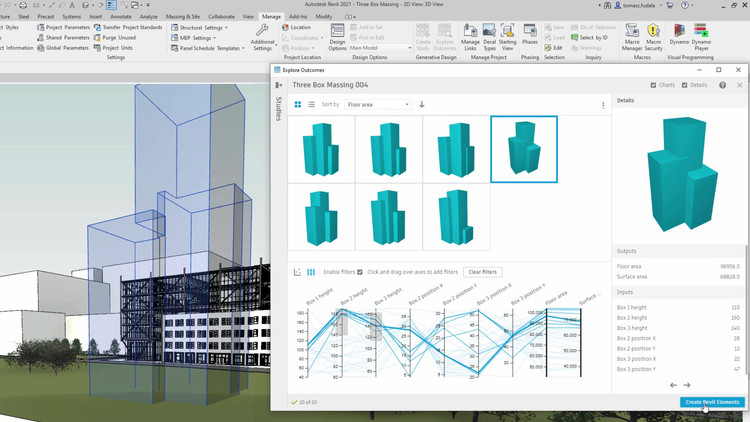
Background
Each of the tools Autodesk provides is tailored to a specific use case tied to an architect’s design process. For instance, an architect begins by sketching ideas on a paper. In the initial stages, architects do not need high levels of detail and use tools like AutoCAD for 2D drafting to create basic floor plans and layouts. As the design progresses, Autodesk’s Revit, a Building Information Modeling (BIM) software, becomes essential, allowing architects to create 3D models enriched with data for collaboration and project documentation. Visualization tools like 3ds Max come into play during the design development phase, enabling architects to present realistic renderings and walkthroughs to clients. With an increased market interest in Generative AI, the advent of popular tools like Midjourney and many startups like SketchPro, the company unveiled what could be described as a digital designer’s sidekick—Autodesk AI.
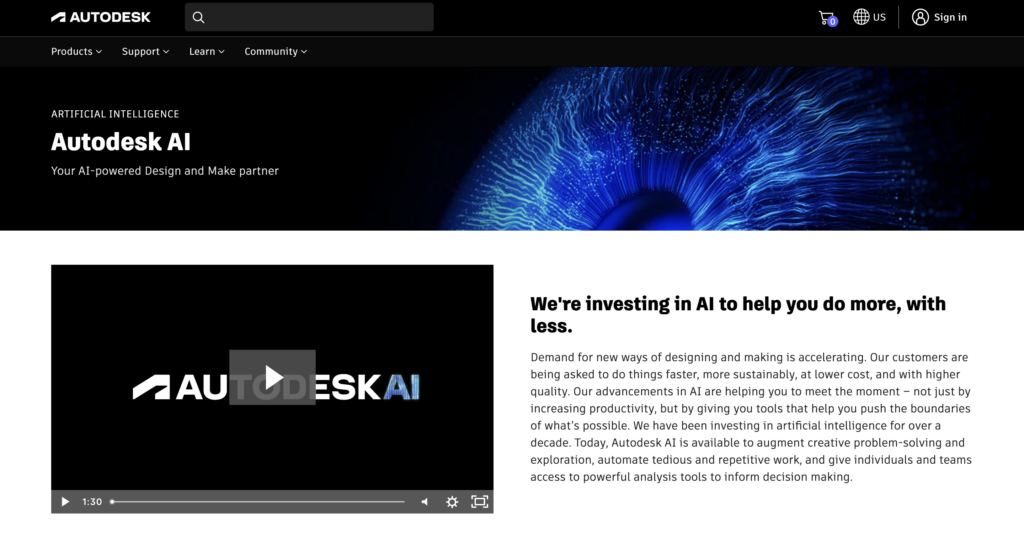
AI Integration Strategy and Value Creation
Rather than create a separate tool for Generative AI or change an architect’s design process, Autodesk introduced AI as a set of features that integrates into their current tools (feature examples in image below). For instance, running a predictive analysis for wind for a design would traditionally require large amounts of coding after creating an entire design in Revit. With Autodesk AI, this analysis is run in real-time with suggestions on improvements to your design. Another example is design iterations with Autodesk Fusion. An architect would typically create one design and then have to create many more by just changing a few parameters. By using AI, iterations are created for the architect that captures the essence of the building rather than a set of parameters. This allows the architect to focus on their creative tasks. In order to train their models, Autodesk used the large amounts of data captured from its current users creating and editing models on their platform.
See here for a video on how Autodesk positions AI. It is important to note that in each of the feature additions and examples below, AI is not positioned as replacing the architect, only as aiding the architect.
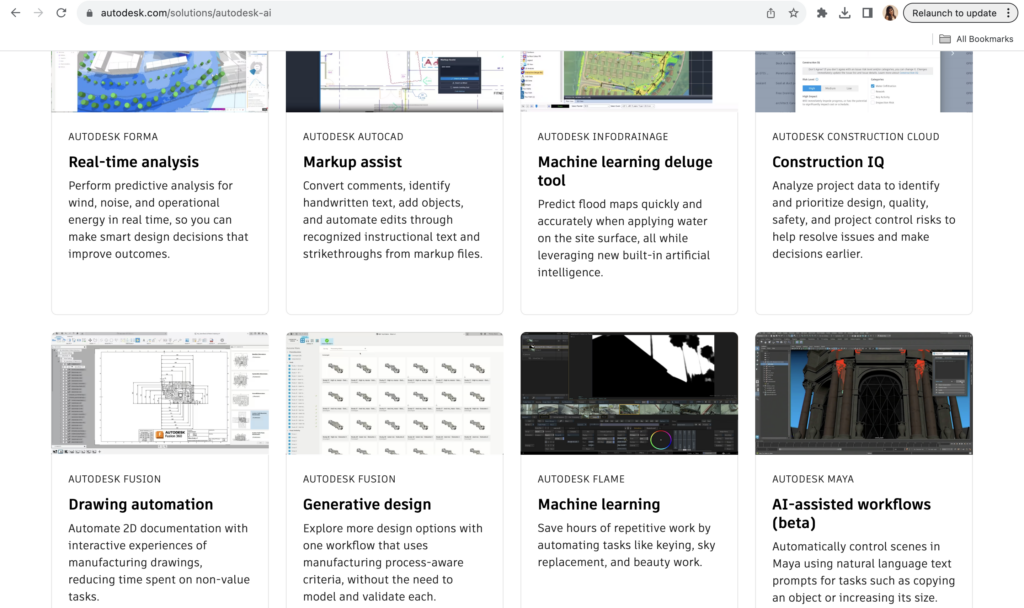


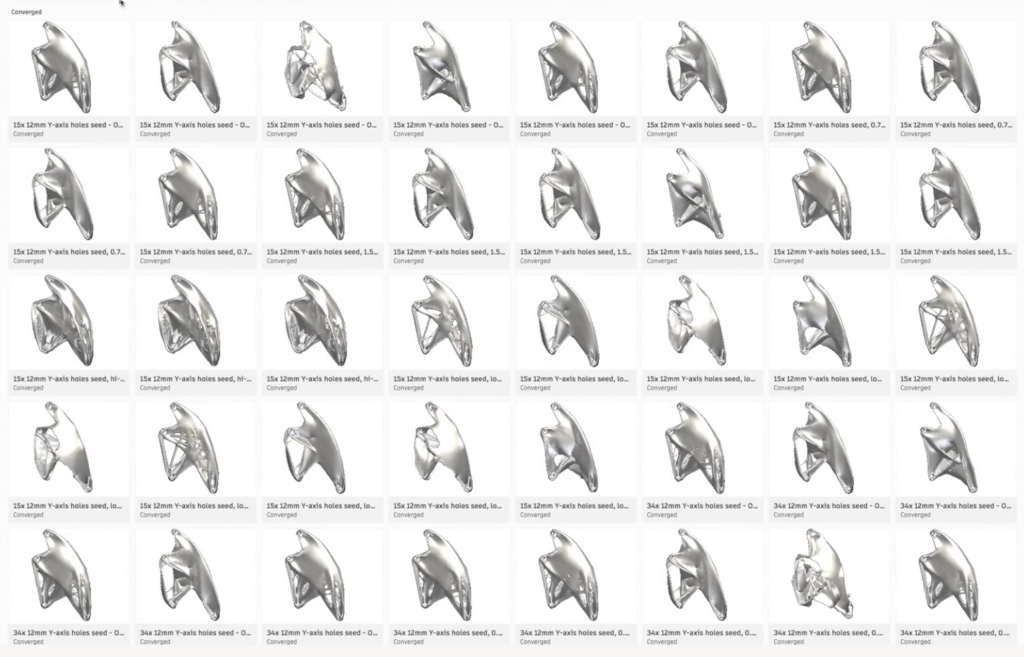
By seamlessly integrating new features into the existing workflow rather than introducing a separate tool, Autodesk avoided the challenge of altering established user behavior.
Historically, architecture has been a field with strong resistance to technology. As a creative industry, there is a strong sense of pride in an architect’s ability to create beautiful artifacts. When Autodesk initially launched Autocad, it came with clear value propositions. For instance, an architect would only have to draw a plan once and it was easily duplicated, an edit would not require a complete redraw and these drawings could easily be converted from 2D to 3D. But many architecture firms, like Zaha Hadid, still required hand drawings because of a firm belief that CAD tools could not create the same beautiful artefacts an architect can. The timeline to cross the chasm for an architectural technology is longer than a traditional piece of tech.
The approach Autodesk took with AI integration within the current workflow stands in sharp contrast to startups like SketchPro, who aim to revolutionize the architect’s process by transforming sketches (first phase of design) directly into renders with materials (last phase of design) by skipping all steps in between. Despite possessing the necessary data to implement a similar solution, Autodesk consciously refrained from doing so, demonstrating a profound understanding of architects’ behavior and their pride in design capabilities. Rather than attempting to replace integral aspects of design that architects hold dear, Autodesk opted for a strategy that leverages AI to eliminate redundant tasks and facilitate creative iterations. This, I believe, positions Autodesk to retain its customer base by allowing architects to excel in their strengths while benefiting from enhanced efficiency through strategic AI integration. Keeping it within existing tools additionally resulted in a customer acquisition cost of $0.
Value Capture and Opportunities
Autodesk has excelled in creating value for architects, but their value capture strategy faces potential challenges. Although they offer benefits comparable to startups with valuations exceeding $100 million, the decision to integrate these advantages as features prevents them from independently monetizing a separate software. Autodesk currently works on a tiered enterprise SaaS model. Based on company size, each tool has a subscription that needs to be purchased separately, between $400 – $6000 for small companies. Given that customers are accustomed to a particular pricing structure, any increase in price of over 5% for the introduction of a few supplementary features might lead to considerable customer churn.
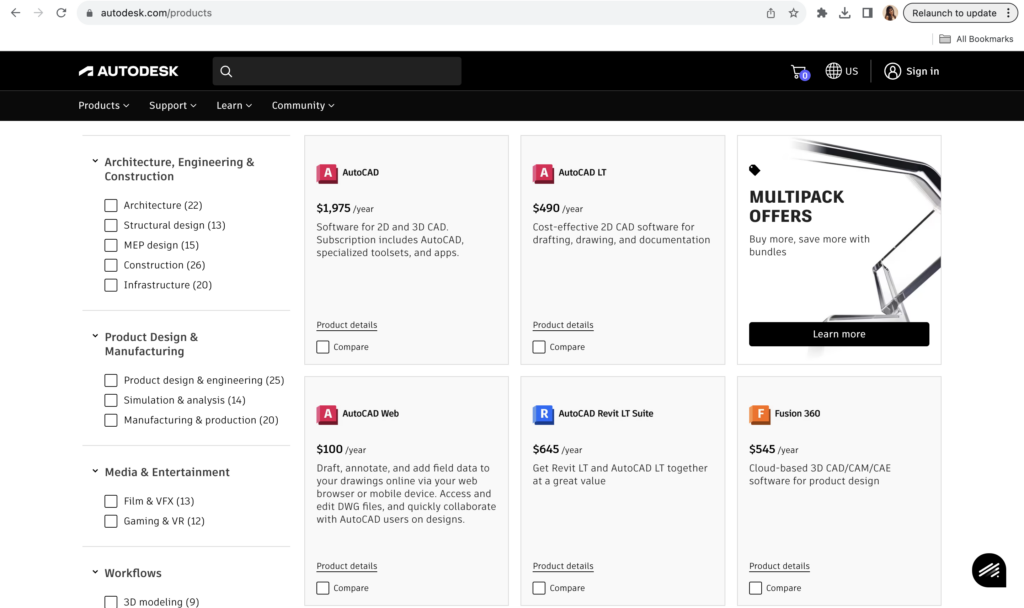
Additionally, a key reason that Autodesk has so many tools is that the traditional architectural design process is extremely fragmented and requires a lot of redundant tasks. With Generative AI increasing efficiency, they stand the risk of disrupting themselves, since fewer tasks for the architect mean possible merging of tools, which eventually results in lost revenue from those tools.
Autodesk has two key opportunities here:
Change in pricing strategy with bundling and upselling: Since software is getting integrated, Autodesk should move to bundled pricing for a set of software. This will result in Autodesk being able to continuously improve product experience with AI, while not worrying about lost revenues from two tools being merged. Additionally, they should capture more value from their AI features by locking features within the tool and upselling users. Currently, there are non-AI ways to accomplish the same task. The user can be upsold with the promise of increased efficiency.
Personalized designs: Currently, Autodesk plays into the idea that they are not disrupting an architect’s process with AI. They now have the ability to play another angle – they are not disrupting an architect’s style with AI. Currently the iterations the AI tool provides are based on training data from thousands of users. They now have the ability to understand a user’s design aesthetic and assist the user with their specific style. There is a significant moat here given the user base and corresponding data Autodesk already has. Additionally, it will help their brand by not being the tech giants that are seen by designers as attempting to kill creativity.
Sources Cited:
- https://www.autodesk.com/
- https://finance.yahoo.com/video/autodesk-unveils-ai-tools-help-
- https://ts2.space/en/autodesk-embraces-ai-revolution-with-new-generative-design-features/#gsc.tab=0
- https://investors.autodesk.com/news-releases/news-release-details/introducing-autodesk-ai-design-and-make
- https://constructionblog.autodesk.com/autodesk-construction-artificial-intelligence/
- https://www.autodesk.com/autodesk-university/



I think the way in which Autodesk positions itself in the architects’ workflows is clever-they tow the line that they are not supplanting the architects’ creative processes but rather enhancing it and helping them reproduce it at scale. But I think that it is only a matter of time before Autodesk gets to know architects’ aesthetics so well that its begin to manage its own creative process.
Has there been major organized pushback from architects yet?
This is an interesting case of a company that has been around for a long time even before the AI revolution (I remember my uncle — a facade architect — telling me about this when I was a kid!), and I remember there was a lot of resistance still to computer-aided design, let alone generative AI in design. Do we think that Autodesk is well positioned to make use of the potential of AI and improve their existing product(s), or do they face tough competition from newer kids on the block?
Really cool article! I’ve seen a number of the 3D CAD tools over the years start incorporating AI/ML into their workflows, namely around smart material/weight reduction. I think it’s really interesting the direction they’re headed.
You mentioned being able to estimate wind impacts from early designs rather than needing to build out the full model. Given some architects pride themselves on very eccentric designs, like the MIT’s Stata Center for example, do you think the AI models can provide accurate inputs on buildings that are so far from the conventional shape/structure?
I feel like this could really help reduce some of the overhead that architects have when drafting designs, but also consider a right of passage (i.e., drawing every single brick in a building). Do you think this software could be other automated design tools such as circuit board layout where there are more rules and less “art” or “design?”
I love how thoughtful you (and Autodesk) have been in understanding that architects are artists, and that not everyone is open to boiling down every process to the most bare-bones-efficient state. I disagree with you that adding these genAI features means that Autodesk should change (especially increase) their pricing. As a tech company, I believe that thoughtful integration of genAI tools is now table stakes for many design software vendors, and that not doing so is actually more risky for disruption. Autodesk is already the industry leader, and at this point, they have to use their scale and resources to put more space between them and competitors, which means readily incorporating tech tools (that have almost no marginal costs) as part of their base offering. Ultimately, I believe their “success case” here is everyone is using their genAI tools (and not someone else’s), regardless of cost.